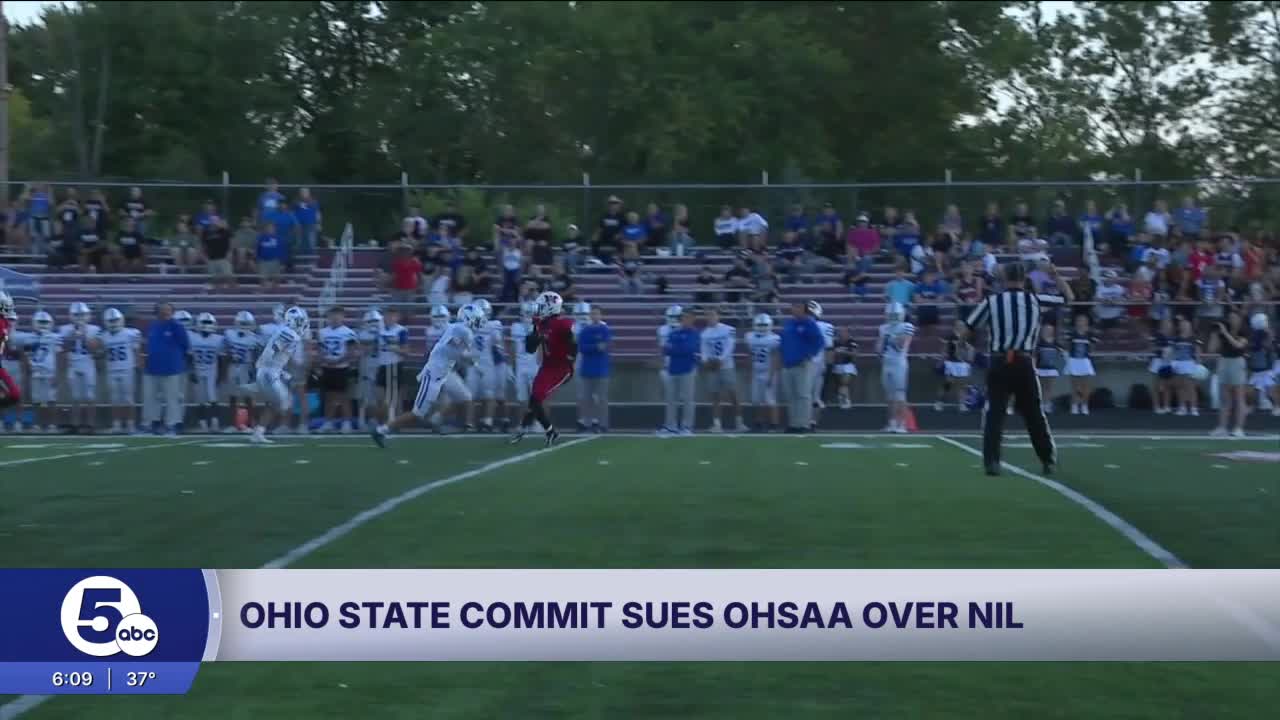CLEVELAND — The ability to pay athletes for their name, image and likeness (NIL) has transformed college sports in recent years and in 44 states, that right has been extended to high school athletes. While Ohio is not one of them, it could soon be as a result of a lawsuit filed in Franklin County Court.
The suit was brought by Dayton area high school wide receiver Jamir Brown, a five-star commit to Ohio State who has made a name for himself on the football field and now wants the ability to profit off that name. In the suit filed this week against the Ohio High School Athletic Association, Brown's attorney argues his client is likely losing out on more than $100,000 in potential NIL, brand partnership deals.
"For some, it's truly to directly help the family; for others, it's opportunities to help cover costs like training costs and recovery costs to be able to continue to compete at the elite levels," said Attorney Luke Fedlam.
A door to be opened not just for Brown but for all Ohio high school athletes to follow.
"There are opportunities for high school student athletes, especially elite high school student athletes, to be able to earn compensation from the leveraging of their name, their image and their likeness," said Fedlam.
For their part, the Ohio High School Athletic Association tells News 5, "We have been anticipating this day was going to happen," said Director of Media Relations Tim Stried.
While Ohio is one of only six states that do not allow high school athletes to accept NIL money, Stried said it's been discussed.
"We had our schools vote on NIL four years ago, and our schools voted it down at the time," said Stried. "But as we've all seen, NIL is not going anywhere."
That's why they approved NIL language just last month, which schools were going to vote on in May. The lawsuit now speeds that up, exactly how fast is up to the judge.
"The lawsuit is asking that the student athlete can start reaping the benefits of NIL now. So really it's in the hands of the court to determine what timeline does the court want to put on this," he said. "Just as the plaintiff is wondering, we also are wondering what timeline will the judge set."
If passed, the proposed new bylaw would allow student-athletes to enter into an agreement and be compensated for their name, image and likeness through appearances, licensing, social media, endorsements and/or the use of branding based on their public recognition (athletic fame) or notoriety. The proposal would also establish appropriate parameters around these activities so that students do not jeopardize their eligibility as it relates to the OHSAA’s amateur bylaws.
"We were close to being in this situation back in the summer with another student athlete, so it wasn't a shock," he said. "Not a confrontational situation. We're one of only six states that doesn't allow it, so we know that we've been in the minority, so we'll see what the next couple of months hold."




